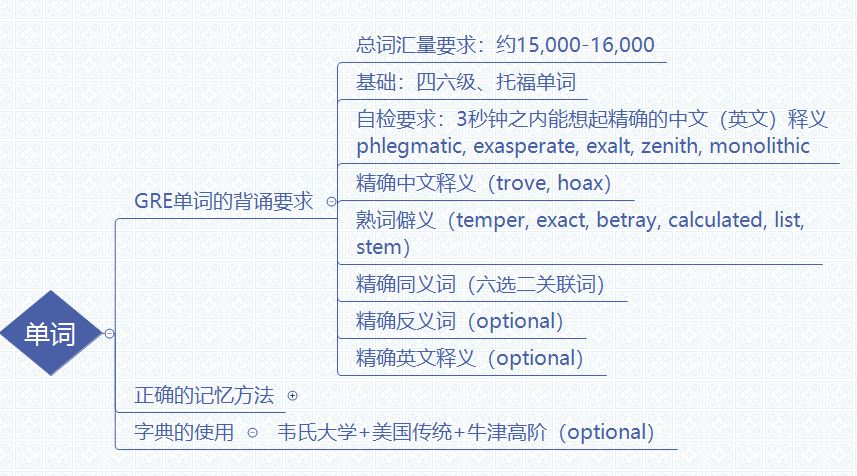托福阅读中,一些词汇和特殊符号往往暗示着考点,想要提高阅读速度和解题效率,下面小编就和大家分享托福阅读解题有技巧 ,希望能够帮助到大家,快来学习一下吧。
托福阅读解题有技巧 八大考点暗示需掌握
一、例证:注意关键词语或短语,如such as ,for example等。
文中涉及基本概述之后是由 such as ,for example 等引导的短语或句子结构处为例证的出题原则。托福的阅读文章多是学术性的议论文 ,这样就会出现“论证结构”,题目的设问方法为“文中某个例子的为了说明什么?”这类句子常考“推断性问题”和“细节性问题”。 For example , for instance ,such as ,“:”是这类题型的标志,出现For example一定会有考题,但是出现for instance ,such as ,“:”的地方不一定有考题与之对应。
二、重要位置的转折:转折词语和其出现位置是重点。
在文章前四行或每段首尾句出现的以but, however, nevertheless ,rather than ,on the other hand 为标志的转折时,有两种情况:一是,有考题;二是,揭示文章主题。Nevertheless 是这几个词汇中出现考点率最高的,but 和 however次之。
三、固定背景:重点留意文章内容。
文章中涉及殖民地北美文章和印第安人文章内容时,多半出现考察文章内容的题目,提问方式和正确答案的设计相对固定。
其中,殖民地北美文章一般都是议论建国之处美国历史,内容涉及城市发展,经济发展,艺术和农业等几个方面,所有这些反映的主题都美国在不断取得重大进步。这类文章的第一句话一般就点明文章的发生时间和议论主题。印第安人文章,由于历史的原因,对于这类文章,内容都是积极,赞美和肯定。主要赞美的方面有:建筑、艺术、社会和农业。而对建筑的赞美可以总结为“高级的,复杂的”; 印第安人的艺术堪称一绝,它们的审美价值和使用价值都很高;印第安人的社会可以概括为“主治严明、分工明确。”
四、定义: 整体把握句子的上下文,采用就近原则寻找答案。
主要是针对一个不易理解的或者容易混淆的难词、概念进行诠释、解释或定义。只要有定义,这里必定有考题。下定义的出题原则对应三种出题模式:行数题、正确答案是定义的改写,正确答案符合定义的例子。这里需要注意同位语及插入,平行结构,带有破折号的地方:注意的信息点为 that is,i.e.,or 等词汇引导的名词词组。一般会出“细节性题目”。
五、列举:锁定信息点是集中列举的关键;整体把握文章关键句是分散列举的要点。
一般来说,原文提到三种以上的现象称为列举。 列举有集中和分散列举。需要注意的地方为:名词列举,对应列举,句子列举和重复再现式列举,分散式列举。
六、比较: 注意句式和一些特殊词汇或短语。
compared with , the most X.X, favorite 等。
文章的首尾句出现同级比较、比较级、最高级,特别是最高级的时候很有可能出现考题。
七、因果: 注意因果词汇和句型。
文章各段首尾句(主要是全文首尾句)出现因果关系时常涉及考题。
常用的因果结构或者词汇如下:
(1) 因果连词:because ,since,for,as ,therefore ,so, consequently等
(2) 表示因果的动词:cause ,result in ,originate from等;
(3) 表示因果的名词:basev,basis,result,consequence等,这些因果句都是指明某两个事件之间因果关系的.因为通过出题可以考查文中两个事件内在的因果关系。
此种句型一般出“推断性问题”。
八、特殊标点符号:理解文章内容和快速确定答案的小钥匙。
一些特殊标点的含义也是考题出现的位置,需要加以注意。 它们是:
(1) 破折号,表示解释.考细节性问题;
(2) 括号,表示解释.考细节性问题;
(3) 冒号,一股同上,有时冒号也表示列举,则考"EXCEPT"题目;
(4) 引号.表示引用,考细节性问题,出现这个符号必有考题。引号的作用是引用和强调;
(5) 惊叹号,表示作者感情,考态度性问题。
托福阅读备考除了需要借鉴参考一些做题小技巧,更需要我们加强日常练习与反思,收获阅读能力和分数的同步提升。
托福阅读真题原题+题目
What unusual or unique biological trait led to the remarkable diversification and unchallenged success of the ants for ever 50 million years? The answer appears to be that they were the first group of predatory eusocial insects that both lived and foraged primarily in the soil and in rotting vegetation on the ground. Eusocial refers to a form of insect society characterized by specialization of tasks and cooperative care of the young; it is rare among insects. Richly organized colonies of the land made possible by eusociality enjoy several key advantages over solitary individuals.
Under most circumstances groups of workers are better able to forage for food and defend the nest, because they can switch from individual to group response and back again swiftly and according to need. When a food object or nest intruder is too large for one individual to handle, nestmates can be quickly assembled by alarm or recruitment signals. Equally important is the fact that the execution of multiple-step tasks is accomplished in a series-parallel sequence. That is, individual ants can specialize in particular steps, moving from one object (such as a larva to be fed) to another (a second larva to be fed). They do not need to carry each task to completion from start to finish — for example, to check the larva first, then collect the food, then feed the larva. Hence, if each link in the chain has many workers in attendance, a series directed at any particular object is less likely to fail. Moreover, ants specializing in particular labor categories typically constitute a caste specialized by age or body form or both. There has been some documentation of the superiority in performance and net energetic yield of various castes for their modal tasks, although careful experimental studies are still relatively few.
What makes ants unusual in the company of eusocial insects is the fact that they are the only eusocial predators (predators are animals that capture and feed on other animals) occupying the soil and ground litter. The eusocial termites live in the same places as ants and also have wingless workers, but they feed almost exclusively on dead vegetation.
1. Which of the following questions does the passage primarily answer?
(A) How do individual ants adapt to specialized tasks?
(B) What are the differences between social and solitary insects?
(C) Why are ants predators?
(D) Why have ants been able to thrive for such a long time?
2. The word unique in line 1 is closest in meaning to
(A) inherited
(B) habitual
(C) singular
(D) natural
3. The word rotting in line 4 is closest in meaning to
(A) decaying
(B) collected
(C) expanding
(D) cultivated
4. The word key in line 7 is closest in meaning to
(A) uncommon
(B) important
(C) incidental
(D) temporary
5. According to the passage , one thing eusocial insects can do is rapidly switch from
(A) one type of food consumption to another
(B) one environment to another
(C) a solitary task to a group task
(D) a defensive to an offensive stance
6. The task of feeding larvae is mentioned in the passage to demonstrate
(A) the advantages of specialization
(B) the type of food that larvae are fed
(C) the ways ant colonies train their young for adult tasks
(D) the different stages of ant development
7. The author uses the word Hence in line 16 to indicate
(A) a logical conclusion
(B) the next step in a senes of steps
(C) a reason for further study
(D) the relationship among ants
8. All of the following terms art defined in the passage EXCEPT
(A) eusocial (line 3)
(B) series-parallel sequence (line 13)
(C) caste (line 19)
(D) predators (line 23)
9. The word they in line 25 refers to
(A) termites
(B) ants
(C) places
(D) predators
10. It can be inferred from the passage that one main difference between termites and ants is
that termites
(A) live above ground
(B) are eusocial
(C) protect their nests
(D) eat almost no animal substances
PASSAGE 64 DCABC AACAD
托福阅读解题有技巧 相关文章:
★ 学习资料库
托福阅读解题有技巧
,希望能够帮助到大家,快来学习一下吧。托福阅读解题有技巧 八大考点暗示需掌握一、例证:注意关键词语或短语,如such as。下面小编给大家分享托福阅读解题有技巧,希望能帮助到大家。 托福阅读解题有技巧文档下载网址链接:
上一篇:托福阅读四种基本能力必须掌握
下一篇:托福阅读短期提分名师攻略指点






